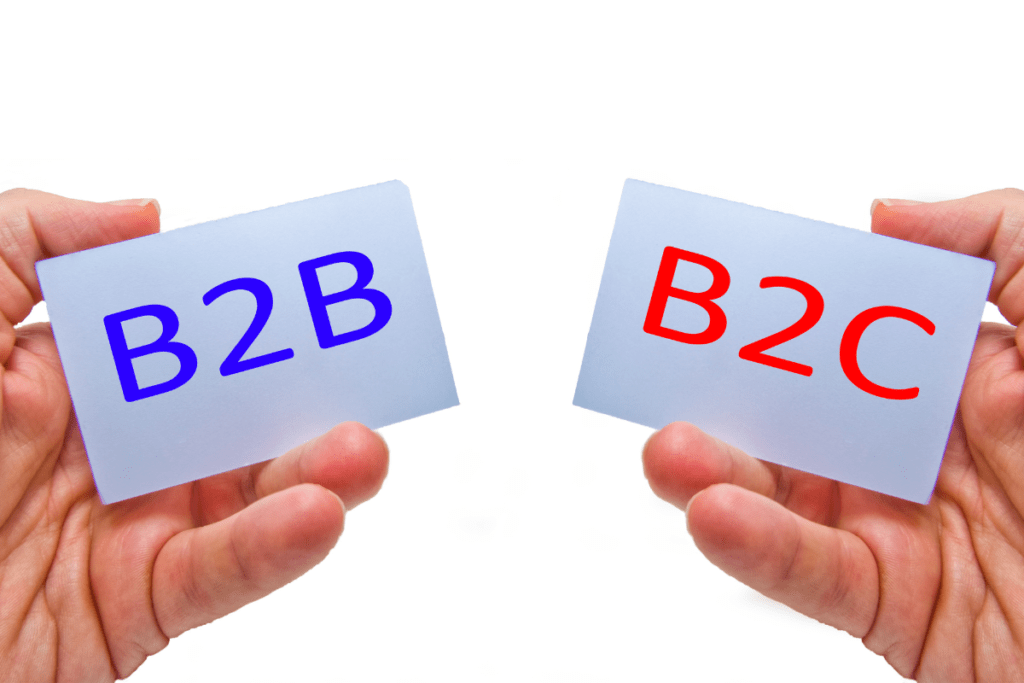In the ever-evolving landscape of business, two key acronyms have gained significant prominence: B2B (Business-to-Business) and B2C (Business-to-Consumer). These two distinct approaches to commerce cater to different audiences and require unique strategies for success. In this comprehensive blog, we will delve deep into the world of B2B vs. B2C, exploring their fundamental differences, marketing strategies, challenges, and potential rewards.
-
Understanding B2B and B2C
Before we dive into the comparison, let’s establish a clear understanding of what B2B and B2C mean:
B2B (Business-to-Business):
B2B transactions involve businesses selling products or services to other businesses.
The purchasing process in B2B is typically more complex, often involving multiple decision-makers.
B2B relationships often require long-term commitments and contracts.
The focus in B2B is on solving business problems and addressing the needs of the organization.
Examples of B2B companies include suppliers of raw materials, software providers, and consultancy firms.
B2C (Business-to-Consumer):
B2C transactions involve businesses selling products or services directly to individual consumers.
The purchasing process in B2C is usually simpler, with one decision-maker (the consumer).
B2C relationships are often transactional and short-term.
B2C marketing emphasizes emotional appeal, personalization, and impulse buying.
Examples of B2C companies include retail stores, e-commerce websites, and fast-food chains.
-
Key Differences Between B2B and B2C
Target Audience:
B2B: Targets other businesses, aiming to meet their operational or strategic needs.
B2C: Targets individual consumers, addressing their personal wants and desires.
Purchase Decision Complexity:
B2B: Involves complex, multi-step decision-making processes with various stakeholders.
B2C: Typically features shorter, simpler purchase decisions made by individual consumers.
Sales Process Length:
B2B: Often involves longer sales cycles due to negotiation, contract discussions, and relationship-building.
B2C: Typically shorter sales cycles, with consumers making quick purchasing decisions.
Relationship Building:
B2B: Focuses on building long-term, trust-based relationships with clients.
B2C: Emphasizes individual customer experiences and satisfaction.
Marketing and Messaging:
B2B: Relies on data-driven, informative, and educational content to showcase expertise.
B2C: Uses emotional appeal, storytelling, and personalization to connect with consumers.
III. Marketing Strategies for B2B Success
A successful B2B marketing strategy requires a deep understanding of the target audience and a focus on building trust and credibility. Here are some key strategies:
Content Marketing: Develop informative, industry-specific content that showcases your expertise and addresses the pain points of your target businesses.
Networking and Relationship Building: Attend industry events, conferences, and seminars to establish connections with potential clients. Building trust is crucial in B2B relationships.
Account-Based Marketing (ABM): Tailor your marketing efforts to target specific high-value accounts, offering personalized solutions to meet their needs.
Email Marketing: Use email campaigns to nurture leads and maintain communication with potential clients throughout the lengthy sales cycle.
LinkedIn Marketing: Leverage LinkedIn to connect with key decision-makers, share valuable content, and showcase your company’s thought leadership.
Customer Testimonials and Case Studies: Highlight successful partnerships and showcase how your products or services have solved real business problems.
-
Marketing Strategies for B2C Success
B2C marketing focuses on creating emotional connections with individual consumers and encouraging them to make quick purchasing decisions. Here are some key strategies:
Social Media Marketing: Utilize popular social media platforms to engage with your target audience, run targeted ads, and build a community around your brand.
Influencer Marketing: Collaborate with influencers in your niche to promote your products or services and reach a wider consumer base.
Content Marketing: Create visually appealing and shareable content that resonates with your target consumers’ interests and aspirations.
Email Marketing: Send personalized product recommendations and promotions to subscribers to encourage repeat purchases.
User-Generated Content (UGC): Encourage customers to share their experiences with your products or services on social media, creating authentic testimonials.
Mobile Optimization: Ensure your website and purchasing process are mobile-friendly, as many B2C transactions occur on smartphones.
-
Challenges and Rewards
Both B2B and B2C come with their unique challenges and rewards:
Challenges:
B2B:
Longer sales cycles can lead to uncertainty and delayed revenue.
High competition in the B2B space demands constant innovation and differentiation.
Building trust and credibility can be time-consuming.
B2C:
Rapid changes in consumer preferences and trends require adaptability.
Consumer loyalty is often fickle, making customer retention challenging.
Intense competition in the B2C market can lead to pricing pressures.
Rewards:
B2B:
High-value contracts and long-term partnerships can provide stable revenue streams.
B2B relationships often lead to recurring business and referrals.
Deep expertise and specialization can lead to industry leadership.
B2C:
Large consumer bases offer the potential for high sales volumes.
Successful B2C brands can become household names.
Agility and creativity in marketing can lead to rapid growth.
Conclusion
In the dynamic world of commerce, understanding the nuances of B2B vs. B2C is essential for tailoring effective marketing strategies and achieving success. While B2B focuses on building trust and solving business problems, B2C taps into emotions and personal desires. By recognizing these differences and embracing the unique challenges and rewards of each approach, businesses can thrive in their chosen market segment and achieve their growth objectives.

